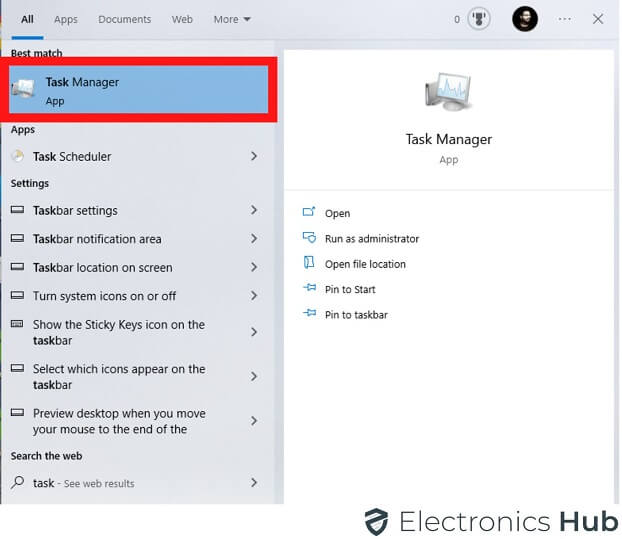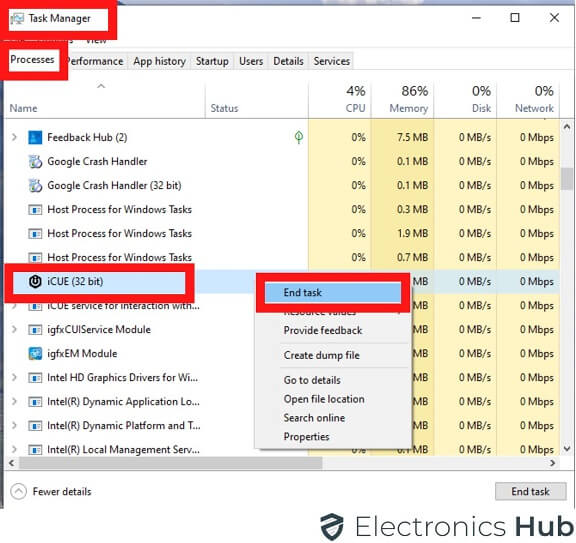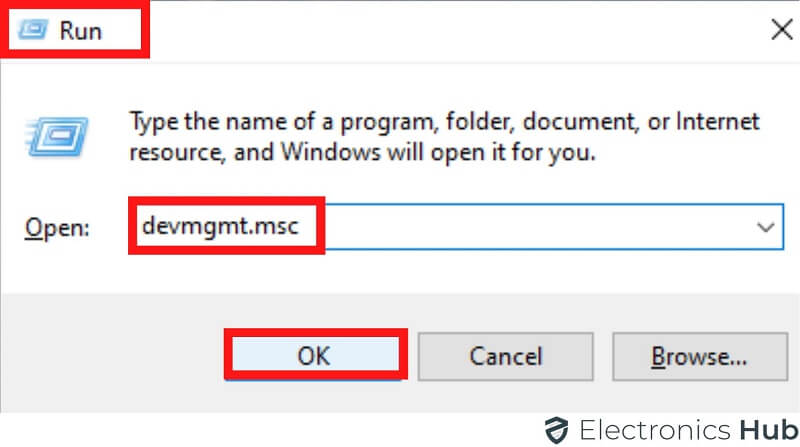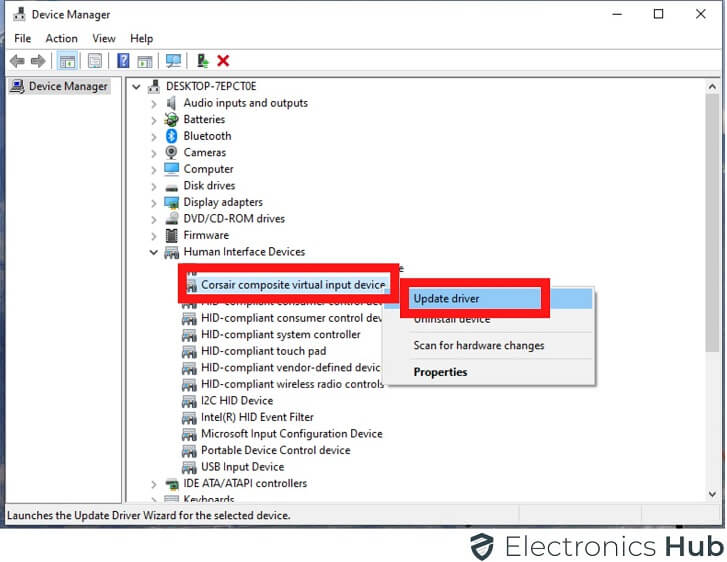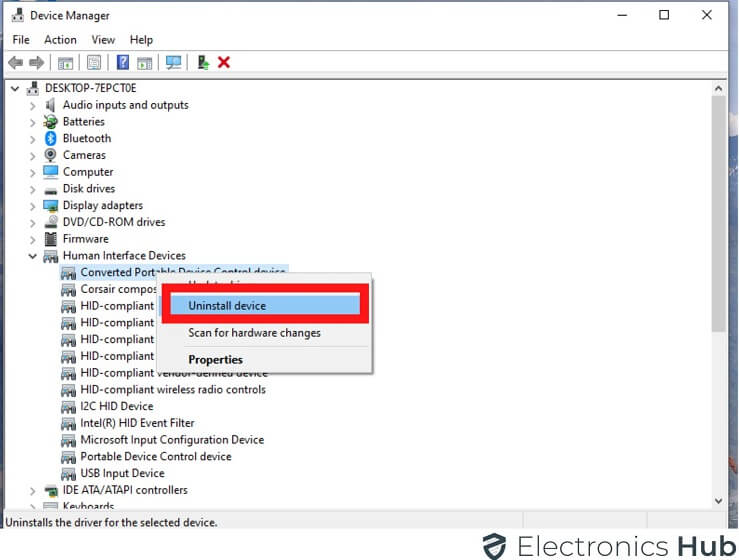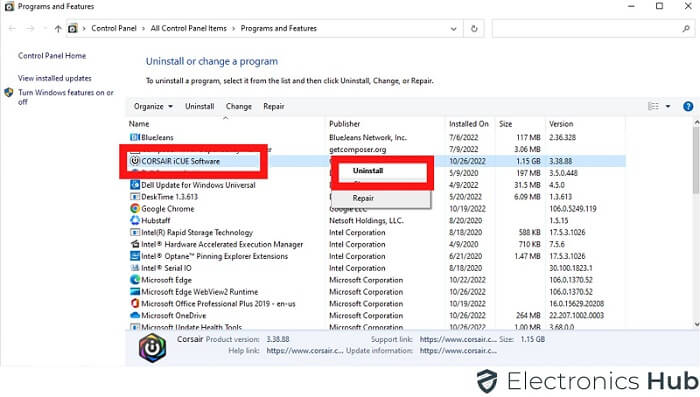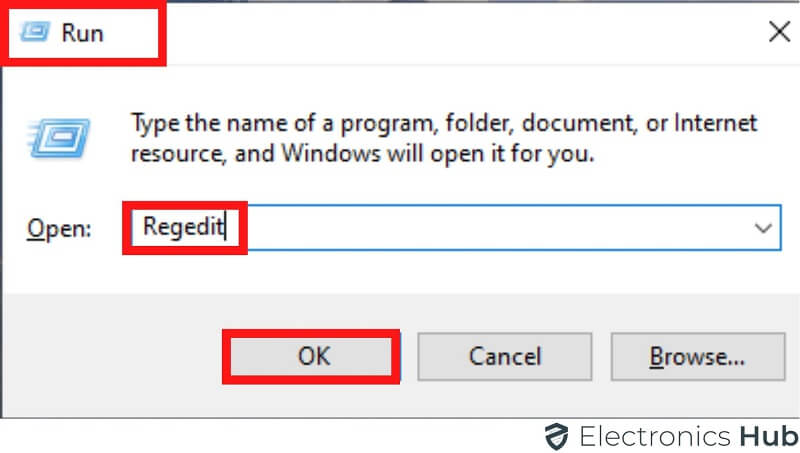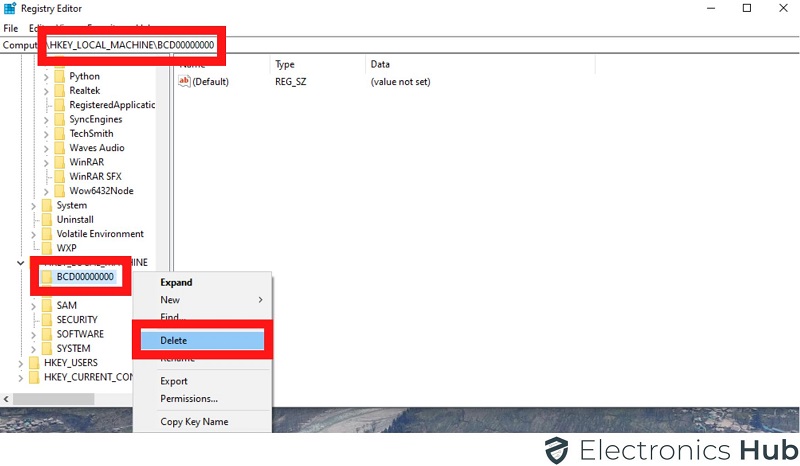If we say Corsair Utility Engine, you might not recognize the term but if we say iCUE, then you might know it as software from Corsair. iCUE, which is short for Corsair Utility Engine, is special software that helps you control your Corsair devices and peripherals such as mice, keyboards, RGB lighting, etc. It is a very popular software, especially for people who use a lot of Corsair products. Despite its popularity, the iCUE Software has its fair share of problems. One such problem is Corsair Utility Engine Not Detecting Mouse or Keyboard.
In this guide, we will see the reasons why Corsair Utility Engine is not detecting the mouse (or keyboard). We will also see some basic troubleshooting solutions to fix the issue.
Outline
ToggleA Brief Note On Corsair Utility Engine (iCUE)
Corsair Utility Engine or iCUE is one of the most popular device management software, especially for different Corsair products. If you use computer peripherals from Corsair, then you have to use (if not using already) the iCUE software.
With the iCUE Software, you can control the RGB Lighting, adjust the DPI Settings of your mouse, monitor system parameters, set fan curves, and many other things.
It is frustrating when your favorite device management software doesn’t open or detect the hardware (peripheral) that you plug into the system.
We have already covered a great deal about the “iCUE Not Opening” issue in a previous guide. But let us take a look at the reasons why Corsair Utility Engine is Not Detecting Mouse.
Why Is Corsair Utility Engine Not Detecting Mouse?
While the iCUE is a very useful software, several users reported problems while using this tool. One of the most common issues is the iCUE Software throwing an error saying “No device detected. Please connect a device”.
The three probable scenarios why you might get this error are:
- You did not connect the peripheral to the computer. As a result, the Corsair Utility Engine (iCUE) isn’t detecting it.
- You connected the peripheral to the computer. The device is working fine. But the Corsair Utility Engine cannot detect it.
- The last case is, you connected the peripheral to the computer. The peripheral is not working and at the same time, the Corsair Utility Engine isn’t detecting it.
For the first scenario, the solution is very simple. Just connect the peripheral to the computer and see if the iCUE Software is detecting or not. But for the other two scenarios, there could be a number of reasons why you might get the error.
It could be entirely a fault in the device (peripheral), an issue with the software (Utility Software or Driver), or even a bad port on the system.
Reasons Why iCUE Not Detecting Mouse
Here are some reasons why is Corsair Utility Engine not detecting mouse.
- Compatibility Issue: The first reason why Corsair Utility Engine is giving the “No device connected” error when you connect a peripheral is if the device is not compatible with the software version of the Corsair Utility Engine. Corsair usually provides a list of devices that are compatible with the iCUE Software. It also frequently updates this list of newer devices.
- Not up-to-date iCUE Software: Corsair updates the iCUE Software every now and then. If you are using an outdated version of the iCUE Software, then there is a chance that you get the “No device connected” error.
- Problem with iCUE Software: Updates are good as they fix user-reported issues, errors, bugs, and other problems. But sometimes, updates can also break things. If there is a bad update with the iCUE Software, then the Corsair Utility Engine won’t detect the mouse (or keyboard).
- iCUE Software Doesn’t Have Control Over the Device: Sometimes, the iCUE Software simply cannot control the peripheral.
- Faulty USB Port: With devices like mice and keyboards, we usually plug them into the USB ports of the computer. If there is a problem with the USB Port, then the Corsair Utility Engine cannot detect the peripheral, be it a mouse or a keyboard.
- Corrupt iCUE Profile: One important feature of the iCUE Software is that it lets the users create profiles as per the task. For instance, a “gaming” profile has a particular DPI value for the mouse, RGB Lighting, and fan curves. But for regular browsing profiles, these values will be different. If there is corruption with these profiles, then the iCUE Software cannot detect the peripherals.
- Unresponsive Peripheral: If the peripheral (mouse or keyboard) isn’t responding (either due to some configuration setting or due to the hardware itself), then the Corsair Utility Engine doesn’t detect the device.
- Driver Issue: Device drivers are a very important piece of software. Most device manufacturers provide drivers as per the operating system. Major operating systems such as Microsoft will also provide drivers to generic devices such as Mice, Keyboard, Audio, etc. If there is a problem with the drivers, then the device might not work properly and also the iCUE Software cannot detect it.
- Hardware Problem with the Device: Last but not least, if there is a fault within the peripheral itself, then it won’t work and also the Corsair Utility Engine will not detect the device.
How To Fix Corsair Utility Engine Not Detecting Mouse?
Now that we have seen some common reasons why the iCUE Software cannot detect a peripheral, let us now see some basic troubleshooting tips if Corsair Utility Engine is Not Detecting Mouse (or other devices).
Is The Hardware Compatible?
First of all, check if the peripheral you are plugging into the computer, be it a mouse, keyboard, camera, or anything else, is compatible with iCUE Software. Sometimes, one version of the software will support or doesn’t support a particular peripheral.
If you feel that a software update to the Corsair Utility Engine started causing the issue of “No device detected”, then roll back to the previous version and see.
a. Restart iCUE Software
Sometimes, basic things such as restarting the system or the iCUE Software can solve the problem. To assure a clean restart, go to the “Task Manager” and from the “Processes” tab, locate the iCUE Software in the list.
Right-click on this option and select “End task”. Also, make sure that there are no other instances of the iCUE Software running in the background. You can notice this by looking at the taskbar tray.
Once you end the iCUE Software task (and its other instances, if any), restart the system. Now, launch the iCUE Software and check if it is able to detect the mouse.
b. Change The USB Port
Most peripherals such as mice, keyboards, webcams, etc. plug into the USB Port of the computer. If the Corsair Utility Engine isn’t detecting the mouse (or other peripheral), then try to change the USB Port.
Chances are, the USB Port is faulty (either the USB hardware is damaged or the software has issues with that particular USB Port). This trick works most of the time.
c. Update Drivers
Check if there are any updates to the peripheral drivers. You can check the manufacturer’s website or alternatively, your system integrator (usually for laptops but even desktops sometimes) might also put the latest drivers on their product support page.
Another simple way to update device drivers is to use Windows Device Manager. Press Windows Key and R Key together (Win + R) to open the run command. In the run command, type “devmgmt.msc” and click on OK.
This will open the device manager. It shows a list of all the devices and peripherals connected to the computer. Identify the device you want to update (in the case of the mouse, it will be in the “Human Interface Devices” section), right-click on it, and select “Update driver”.
d. Uninstall and Reinstall The Device
While you are in the “Device Manager” section, you can uninstall and reinstall the device.
You just have to uninstall the device by right-clicking on the device and selecting the “Uninstall device” option. Restart the system and Windows will automatically reinstall the device for you.
e. Update iCUE Software
If you are using an outdated version of the iCUE Software, then the Corsair Utility Engine might not detect the mouse or any other peripheral.
Go to Corsair’s website and see if there are any updates to the iCUE Software. If so, apply the update and restart the system.
f. Delete Old Profiles And Create a New One
As we already mentioned, Profiles in the iCUE Software allow you to set different settings for different situations. But sometimes these files might get corrupt and won’t detect any peripheral.
Delete all the old profiles. Restart the iCUE Software (just as we mentioned in the previous method). Now, create new profiles as per your needs (Gaming, Browsing, Video Editing, etc.). Many users reported that this method worked for them.
g. Uninstall And Reinstall The iCUE Software
As a last resort, we can uninstall the Corsair Utility Engine (iCUE Software) and reinstall it. To uninstall, press Windows Key and R Key together (Win + R) to open the Run command.
In the Run Command, type “appwiz.cpl” to open the Program and Features section. Alternatively, you can open it through the control panel.
If the view of the control panel is large or small icons, then Control Panel -> Programs and Features. But if the view of the control panel is category, then Control Panel -> Uninstall a Program (under Programs section).
From the list, look for the “Corsair iCUE”. Right-click on this and select uninstall. Now, even though this operation will delete all the files of the iCUE Software, the registry files will still remain intact. You have to delete them before reinstalling the iCUE Software.
Open the run command (Win + R), type “Regedit” and click on ok. Navigate to “HKEY_LOCAL_MACHINE\SOFTWARE\Corsair\ Corsair Utility Engine” and delete all the registry files in this section.
Now, restart your system. Go to Corsair’s website and download the latest version of the iCUE Software. You can install it.
Conclusion
Corsair Utility Engine or iCUE is a special software from the popular peripheral manufacturer, Corsair. If you use any of Corsair’s products such as mice, keyboards, RGB Lighting, Cooling Fans, etc., then this software helps you in customizing, controlling, and managing those devices.
But several users reported problems with the iCUE Software and one such popular issue is Corsair Utility Engine Not Detecting Mouse (or Keyboard).
In this guide, we saw some basic reasons why iCUE Software won’t detect devices. After that, we also saw some simple solutions to fix the “Corsair Utility Engine Not Detecting Mouse” issue.

